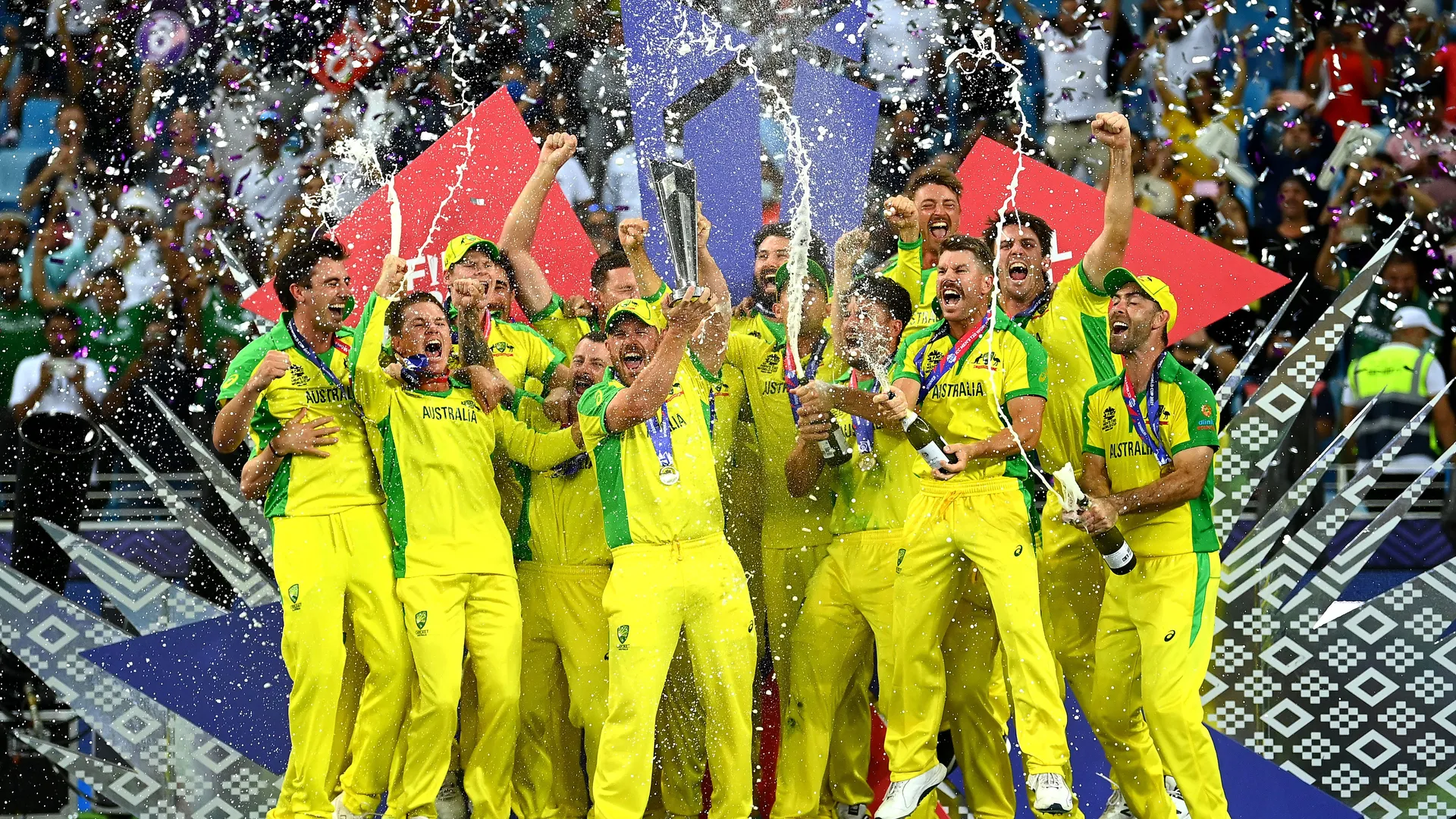T20 World Cup 2022 | Australia are ready to bury all their rivals Down Under

Let’s take a close look at how the Australians have ticked all the boxes ahead of the T20 World Cup, shall we?
While the other nations adopted varying tactics and methods to prepare for the T20 World Cup, Australia – the reigning world champions – decided to play only 17 T20I matches since their first-ever glory in the tournament last year. It was the second-least number of games among full-member nations: only Afghanistan (15) played fewer. To put it into context, subcontinental giants India and Pakistan played 35 and 25 T20Is respectively. Even England, despite playing 15 Tests, at least five more than any other country, took part in 21 T20Is during this period.
Why did Australia play such few T20Is when they have the opportunity to defend the world T20 title at home? Not to forget, no team has achieved the feat yet.
The move taken by Cricket Australia(CA) to play fewer matches is seemingly based on multiple reasons. Out of 17 T20Is, 10 were in their backyard. Five of them came against a struggling Sri Lankan side in February, a good five months before they emerged as the Asian champions. The other five, against West Indies and England, took place just ten days before the World Cup began. It is evident that the CA did not want the other title contenders to get used to their well-known conditions, and the back-to-back series against West Indies and England crammed into such a short period were nothing but part of their preparations for the showpiece event.
T20 is one of those games that can be unpredictable, but I think history tells you that, generally, the host nation are slight favourites in big tournaments. Many of us have travelled and played in Australia and know the conditions, but of course, no one is going to know the conditions or be as accustomed to them as the Australian team. They are also reigning champions, so you have to pick them out probably as favourites for the tournaments.
Simultaneously, playing lesser than other title-contending nations helped reduce Australia’s fears of being hit by any major player injuries. Australians are known to not prioritize the Big Bash League (BBL) – their nation’s elite franchise competition – over international fixtures. On the other hand, Indians, Pakistanis, and Englishmen have the exact opposite approach when it comes to the IPL, PSL, and the Hundred. Albeit debatable, it is only logical to conclude that playing too many matches in a short period plays a role in unfortunate injuries. The victims – Jasprit Bumrah, Ravindra Jadeja, Jofra Archer, and Reece Topley – are right in front of everyone. Even Shaheen Shah Afridi was on the verge of missing the World Cup but somehow managed to get back in the groove in the 11th hour.
Now, look at Australia’s full-fledged bowling attack, consisting of Josh Hazlewood, Mithcell Starc, Pat Cummins, and Adam Zampa. There is not much argument that it is the best attack in this format worldwide. Even as a whole, Australia’s strike rate (16.69) since the last T20 World Cup is second to none among full-member nations. Fair to say, playing fewer matches helped the Aussie bowlers to remain fit and start afresh whenever they took the field.
“We'll be mindful of not being too narrow-minded in terms of our focus – what we've tried to do over the last eight to 10 months is to make sure everything we're doing in the T20 space ties back to the World Cup,” skipper Aaron Finch had said during the pre-match conference a week ago. “For us, it's about making sure once we get there that we've had plenty of different combinations of teams that we can play because the last thing that you want is to have an injury derail your whole campaign because you're pigeonholed into playing one style of cricket or one structure of the team.”
Australia did not have the tag of being the World T20 favourites in the UAE last year. Yet, they left everyone surprised by emerging triumphant. While the others have made wholesale changes from their previous edition’s squad, Australia initially made only one: bringing in powerhouse Tim David for leggie Mitchell Swepson. The other forced change that they have made now is nothing but a tactical masterstroke.
When Australia toured India last month, Aaron Finch and the Australian leadership promoted Cam Green to the top of the order in the absence of David Warner. The ploy worked as Green grabbed the opportunity with both hands by finishing as the top-run getter of the series (118 runs at a strike rate of 214.55). The 23-year-old flourished twice in three attempts, which included a brisk 19-ball half-century.
However, many also criticized Finch’s decision to open with Green considering the latter was not even in the World Cup squad. But the discussion is no longer relevant considering Green has made a late entry into the mix as injured Josh Inglis’ replacement. It certainly gives Australia an additional brute-force option at the top and even in the middle if required. It was a bold move taken by the CA because this means there is no substitute wicketkeeper for Matthew Wade in the roster.
He's in! #T20WorldCup
— cricket.com.au (@cricketcomau) October 20, 2022
“There will be a little bit of mixing and matching but still with that one eye towards the World Cup to make sure we're still as rounded as we can be as a squad,” Finch added during the conference.
Australia will begin their title defense on October 22 by taking on trans-Tasman rival New Zealand in Sydney. They have earned the ‘clear favourites’ tag this time, similar to India’s steadfast standing in the eyes of experts ahead of the ODI World Cup in 2011. Then, the Men in Blue had lived up to the expectations at home, winning the prestigious trophy after 28 long years. Now, the Aussies have all the ingredients to make headlines by replicating the feat. The only question is whether their potential can meet execution to create history.

Comments
Sign up or log in to your account to leave comments and reactions
0 Comments